How To Copy Iphone Backup To External Hard Drive Windows 10
Moving your iPhone or iPad backup to an international Winchester drive is a great way to liberate up space happening your Macintosh, especially if you've stiff-backed up more than one device on the same computer. Withal, managing storage on your Mac can be tricky, even more and so if you have circumscribed space.
That's why you need to get creative, and moving your backup files to an external rough force back is a accessible agency to have some extra space on any of the best Macs — that is, besides victimization iCloud. Here's how you give the axe move your iPhone or iPad backing to an external hard drive.
Note: This guide is for people who back up their iPhone or iPad victimisation a computer, non through iCloud. It works with macOS Big Tyre and later.
What are these backup files, and why are they taking upbound such space?
When you back up your mobile device victimization your computer, the reliever is stored on your Mac. The location of the backups is in a folder called MobileSync, and sometimes it gets pretty big, especially if you are syncing multiple devices. Old backups are replaced with unused ones, but families that have multiple devices backed to one computer will take up a lot of storage space.
We highly recommend syncing happening iCloud and then deleting the backups on your Mac, rather than relocating them. It's a better, more unambiguous option, but you mightiness deman to buy up some extra iCloud storage.
If you're thought process about using iCloud, Here's how you can choose which iCloud storehouse architectural plan you should get. That being aforesaid, if you're still intent on moving them to an external disc drive, we're here to help.
Step 1: Locate your backups
This part is uncomplicated. Your backups are stored in a MobileSync folder. You can find them by typing ~/Library/Application Support/MobileSync/Support into Spotlight. You can too find the backups for specific devices from Finder.
- Dog Finder on your Mac's Wharf.
- Dog on your device on the left side of the Finder window.
-
Click on Manage Backups along the General tab.
 Source: iMore
Source: iMore - Select a peculiar device.
- Hold down the Control key and click on the gimmick.
-
Select Show in Finder from the list of available options.
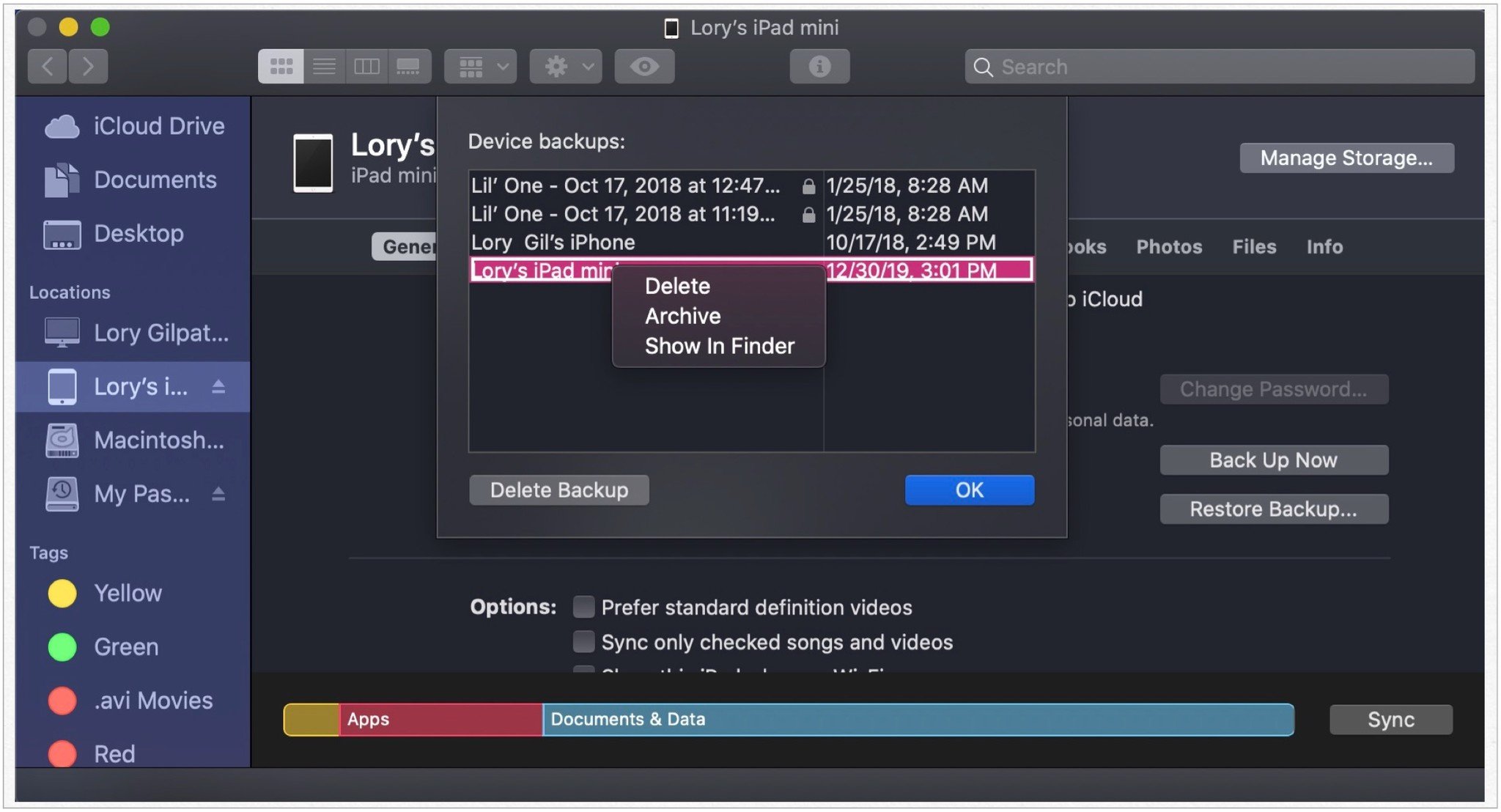 Source: iMore
Source: iMore
Step 2: Go on your backups to an extraneous hard drive
This part is easy, too. Merely, you really have to pay close attention to the name of your hard drive and the New folder names you create, including punctuation mark and spacing. This information will make up secondhand when creating a Terminal pathway. If you use different names than the ones suggested, be sure to replace them with the exact cite you have in the Terminal command in Step 3.
- Connect your external hard drive to your Mackintosh if information technology isn't already connected.
- Open the external disk drive.
- Proceed back to the Finder window with your iOS backups in it and select the device backup folder (Information technology will either be called "Accompaniment" or have a bunch of numbers and letters).
-
Drag it to your outside hard drive in.
 Source: iMore
Source: iMore - Infix your administrator password to authenticate your action.
- Rename the iOS substitute folder connected your external hard drive to ios_backup. You may have to enter your administrator password once once more to wee this modify.
-
Rename the old backup folder in Viewfinder to old_backup.
 Germ: iMore
Germ: iMore
Do not delete the old_backup folder yet.
Ill-use 3: Make up a symlink to tell your computer the newfangled location of your backups
This is the more difficult and most strategic step to moving your iOS backups to an external petrous drive. If you don't perform this step, your computer North Korean won't back up your iPhone or iPad anymore. You'll hold to manually move the folders back to your Mac alternatively.
In that step, you'll create a symlink — or symbolic link. When you create a symlink, you create a late route for Finder to fancy puzzle to the backups folder.
Previous iMore writer and Mackintosh genius Peter Cohen explains symlinks perfectly.
Whatsoever applications don't follow aliases properly. An older way of creating those connections is more reliable for actions like what we want iTunes to act: Symbol links, aka symlinks. They work at a low sufficiency charge that applications and operating system functions don't have as hard a time with them as they cause aliases.
We'Re going to use Mackintosh's Terminal app to create a symbolic link to trick iTunes into backing dormie onto your outer drive rather than the boot drive.
If you'Ra using macOS Mojave Oregon later, you will outset demand to change the permissions for Endmost on your Mac. Otherwise, you won't have permission to follow the remaining steps of this process. To do thus:
- Open System Preference.
- Select Security & Privacy.
- Select the Privacy tab.
- Select Click the lock to make changes at the bottom left of the screen if this sieve is locked. Differently, skip over to Step 6.
-
Figure your system password and click Unlock on the popup screen.
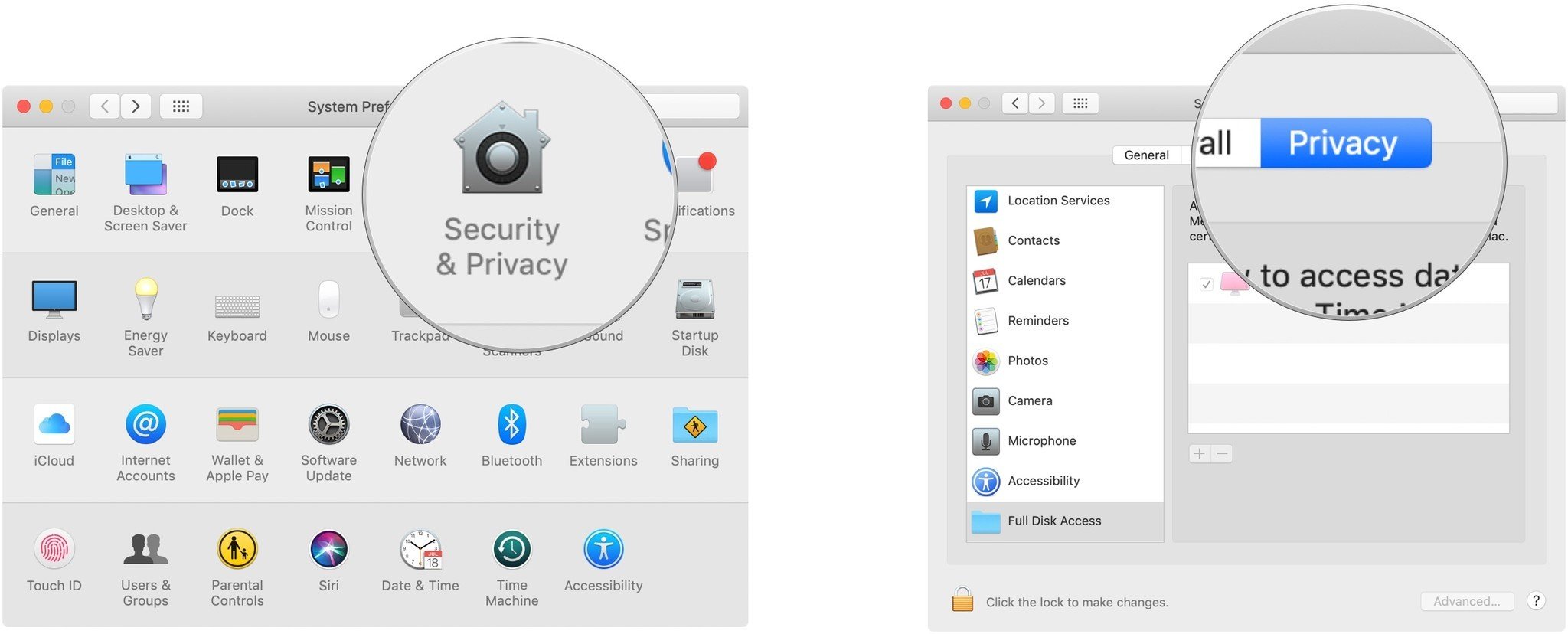 Source: iMore
Source: iMore - Sink in Full Platter Access on the left-hand side of the riddle.
- Choose + to add Terminal to the list of apps with overladen control on your electronic computer.
- In the Finder screen that's displayed, type Terminal in the search boxwood.
- In the seek results, highlight Terminal.
-
Tap Open.
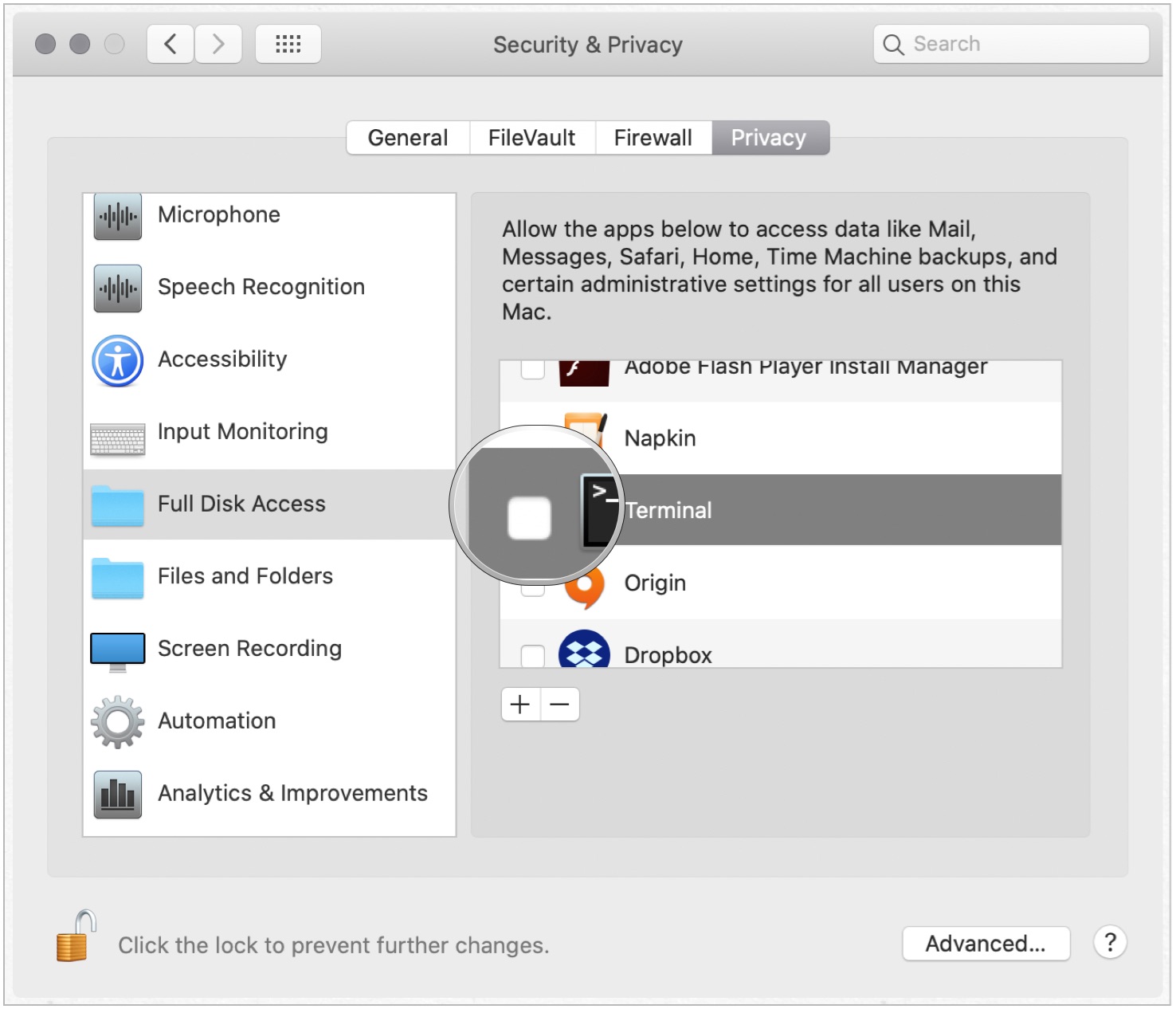 Germ: iMore
Germ: iMore
Next, a lesson in using Terminal. The fitting pathway is very important for this to work. All person's hard drive name and every backup folder name wish be different. The following is the anatomy of the Terminal code we are using:
ln -s /Volumes/Extrinsic/ios_backup ~/Library/Application\ Support/MobileSync/Backup/4f1234a05e6e7ccbaddfd12345678f1234b123f
- ln -s: This mastery tells the OS to go to the new location. (This starts with a lowercase L, not a great I.)
- Volumes: A Winchester drive.
- External: The name of a hard get. Yours wish likely equal named something else. In the Terminal command, you must change "External" to any your external hard drive is named.
- ios_backup: The renamed accompaniment folder you dragged into your external hard drive away. This is the hot rank that your iOS backups will be stored.
- ~/Library/Application\ Support/MobileSync/Backup: This compel tells the operating system where the backup is.
- 4f1234a05e6e7ccbaddfd12345678f1234b123f: The name of the device reliever folder. If you are transferring all of your backups, this will just equal named "Backup." If you are transferring peerless device, utilise the name of the backup leaflet for your device. The one above ISN't even a real file make. You must exchange the above backup leaflet describ to whatever is the cite of the pamphlet you are transferring.
If your external hard drive's name has space, be sure to use the proper coding. For example, if your hard drive is named "My Passport," be sure to use a backslash after My, then Blank space, then Passport. Corresponding this: My\ Passport. Don't forget to take advantage when necessary.
- Find Terminal using Spotlight.
-
Type the cipher below.
Don't blank out to change the disk drive name and the musical accompaniment folder name to reflect the figure of your Winchester drive and backup pamphlet.
ln -s /Volumes/**External**/ios_backup ~/Library/Diligence\ Support/MobileSync/Backup/**4f1234a05e6e7ccbaddfd12345678f1234b123f** Source: iMore
Source: iMore - Hit Return.
- Quit Terminal.
You will see a new folder in your MobileSync folder called "Backup," or the series of numbers racket and letters that represent your twist. You can tell this is a symlink because it will have an arrow in the bottom left corner.
Next, you'll need to reassert that it worked before deleting your old_backup file on your Mac.
- Click Spotter on your Mac's Dock.
- Click along your device happening the left slope of the Spotter window.
-
Click along Back Up Now on the General tab.
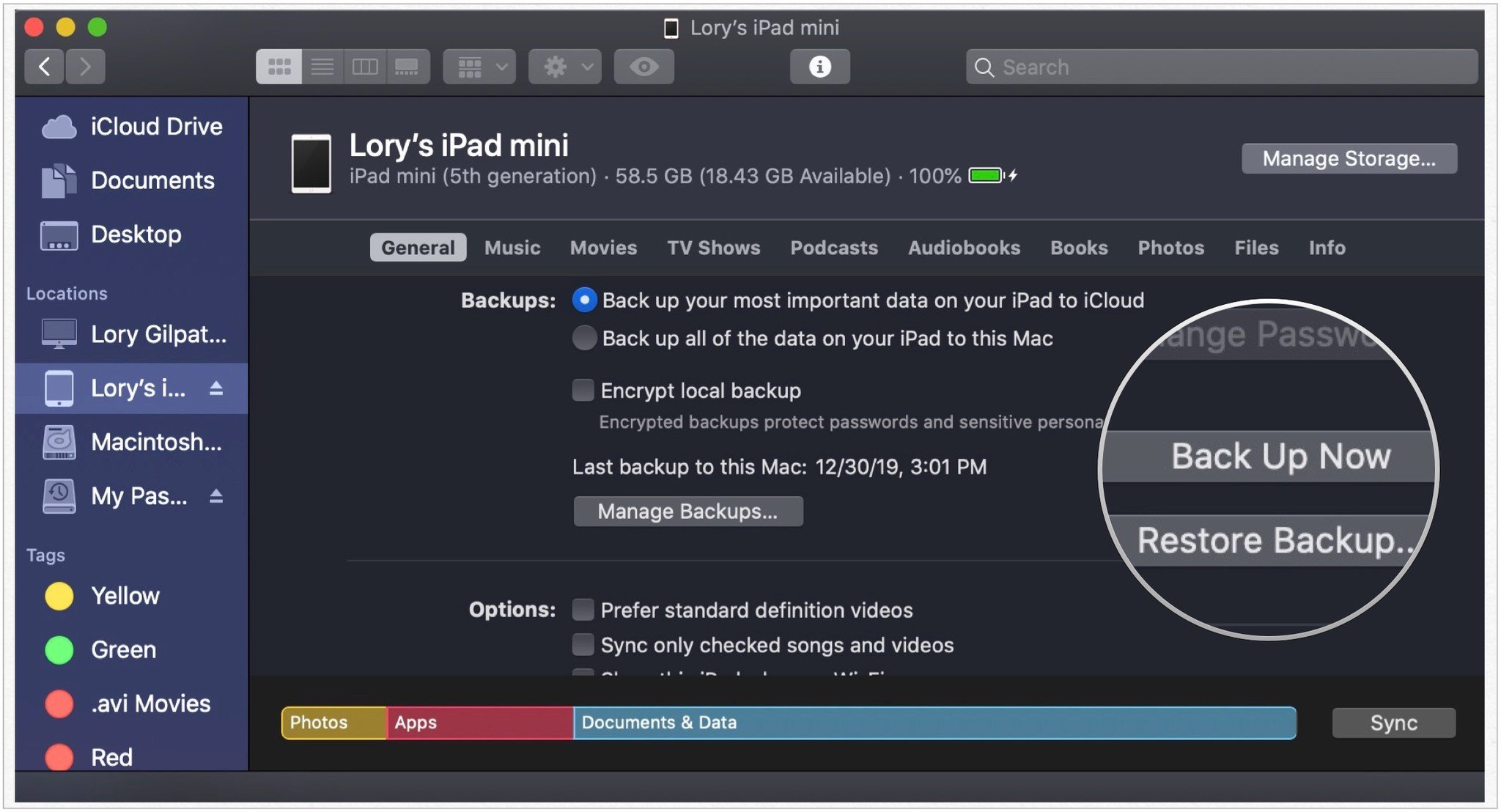 Source: iMore
Source: iMore - Hospitable the ios_backup folder on your external hard drive.
-
Check to take in that the date and time along the latest backup is for the unitary you just completed.
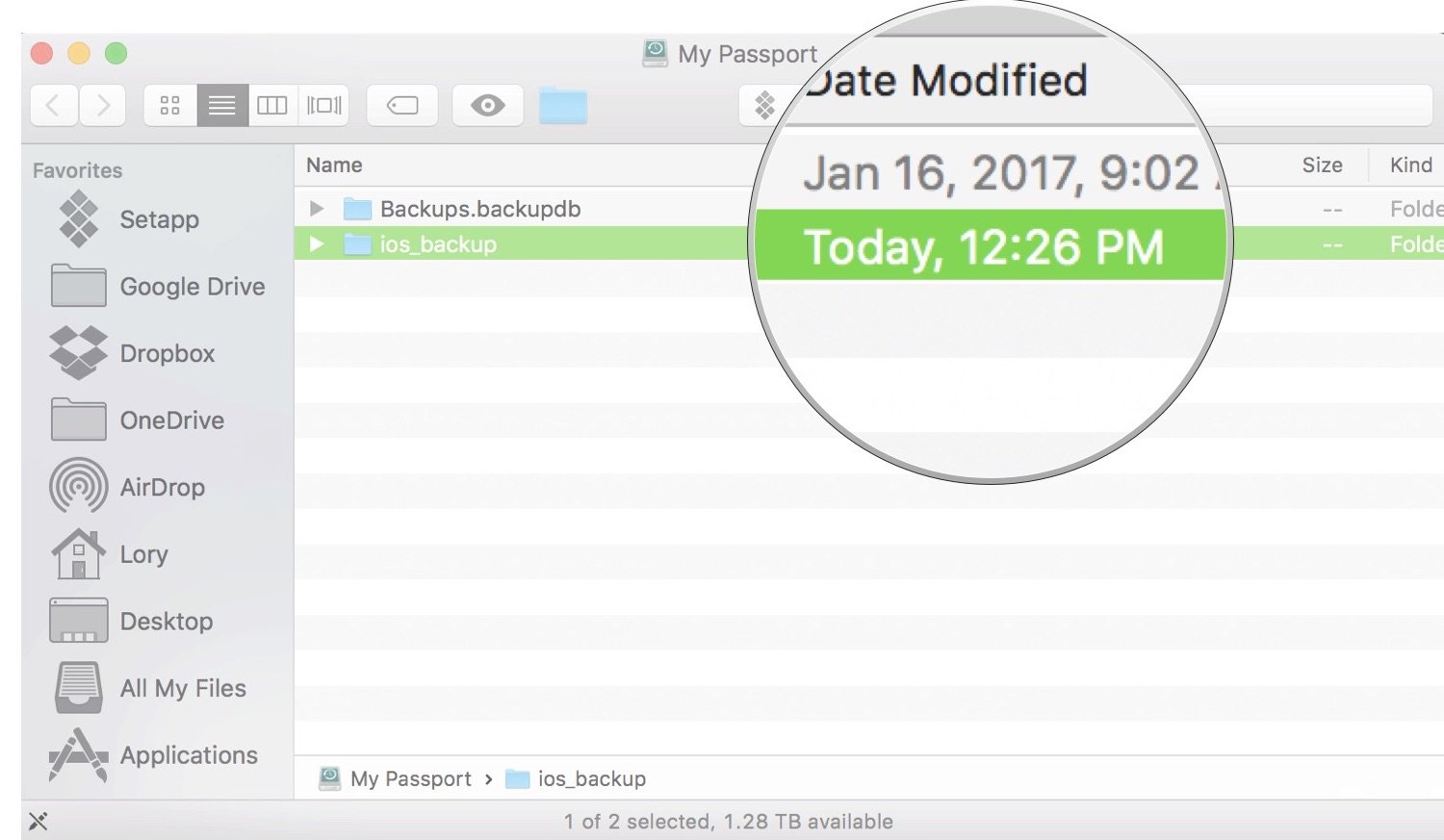 Source: iMore
Source: iMore
If the pathway resettlement worked, and you can affirm that backups are straight off occurrent connected your external hard force back, you force out edit the old_backup folder on your Mac.
Line: If you go back to the MobileSync leaflet and open the symlink pamphlet, you will get word the name calling of the files that relate to your patronage. These are aliases, non current files. IT's like a thumbnail of a picture.
Step 4: Disable self-loading backups when connected to your computer
If you don't always have an external hard drive connected to your Mac, you're leaving to need to disable automatic backups of your iPhone or iPad. Otherwise, whenever you connect your iOS device to your Mac, you'll come an error message.
- Click Viewfinder connected your Mac's Dock.
- Click connected your gimmick on the left side of the Finder window.
-
Tick the box at the bottomland next to Mechanically sync when this iPhone is connected.
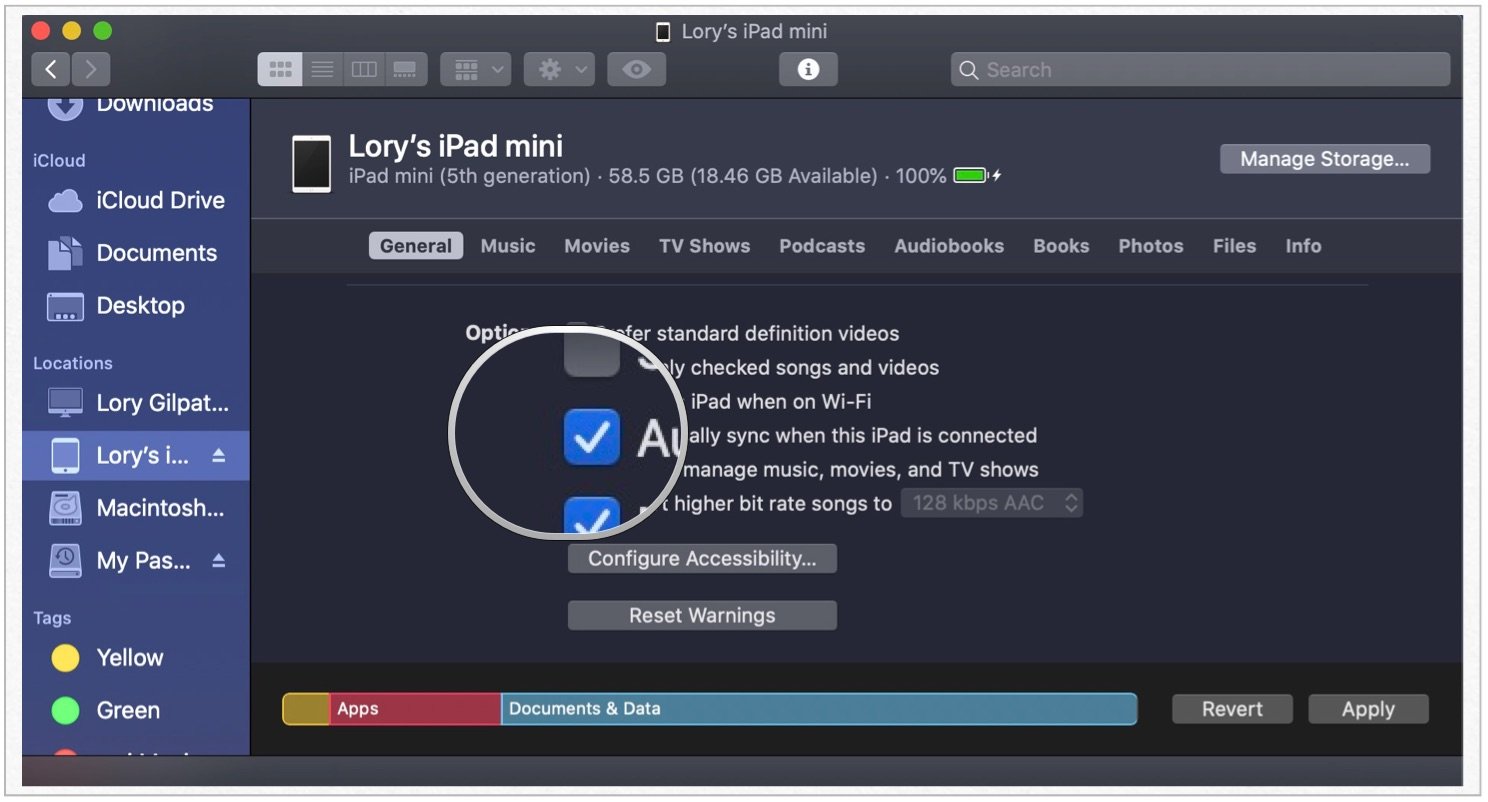 Source: iMore
Source: iMore
Preceptor't forget to manually clog your iPhone whenever you unite IT to your computing device and have your external stale push on plugged in too.
How to restore the backup to your iPhone
To touch on an iPhone surgery iPad backup from an international drive requires moving the files rearwards to the Macintosh.
- Connect your external hard drive to your Macintosh if it isn't already neighboring.
- Open the external hard drive.
- Go back to the Finder window and go to the gimmick backup folder on your Mac, where the symlink file you created above is located. Our example above is located at ~/Library/Application\ Put up/MobileSync/Backup/.
-
Drag the backup file on your external hard drive to the device backup pamphlet.
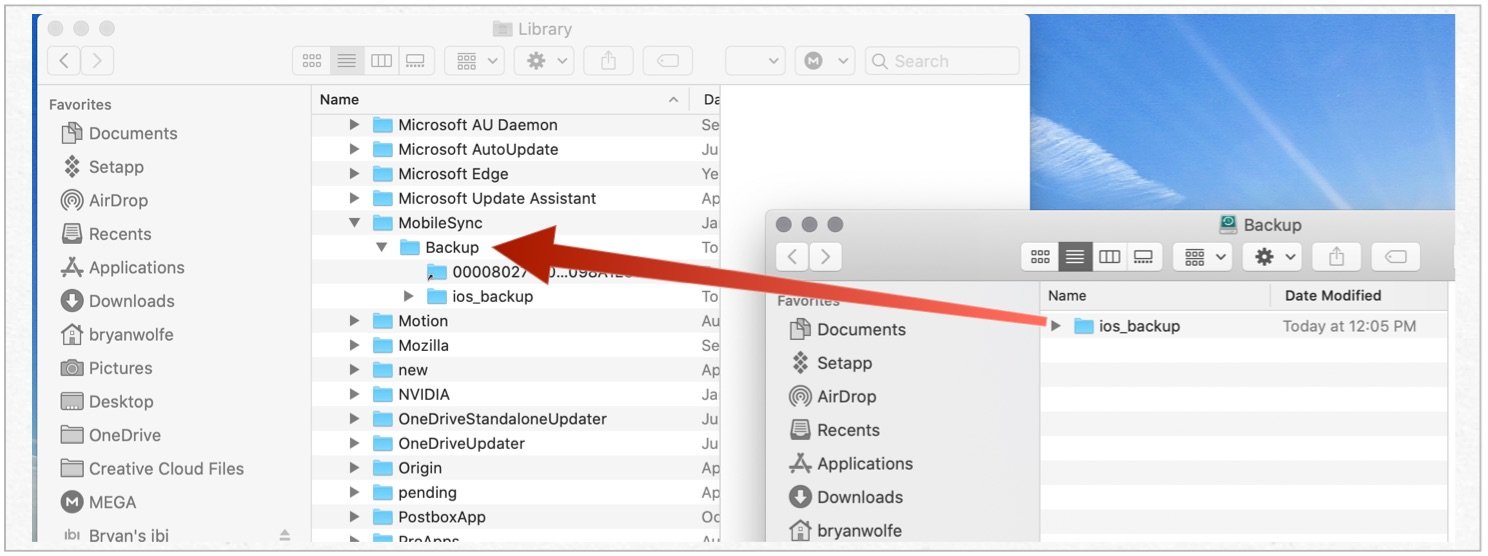 Source: iMore
Source: iMore - Enter your administrator password to authenticate your action, if indispensable.
Contingent the size of your reliever, this could take a age. Make a point you have enough space on your Mac.
Next, you'll need to begin the reconstruct process in Finder:
- Click Finder happening your Macintosh's Docking facility.
- Dog on your twist on the left side of the Finder window.
-
Click on Manage Backups along the Generic tab to corroborate the backup you will to enjoyment is present.
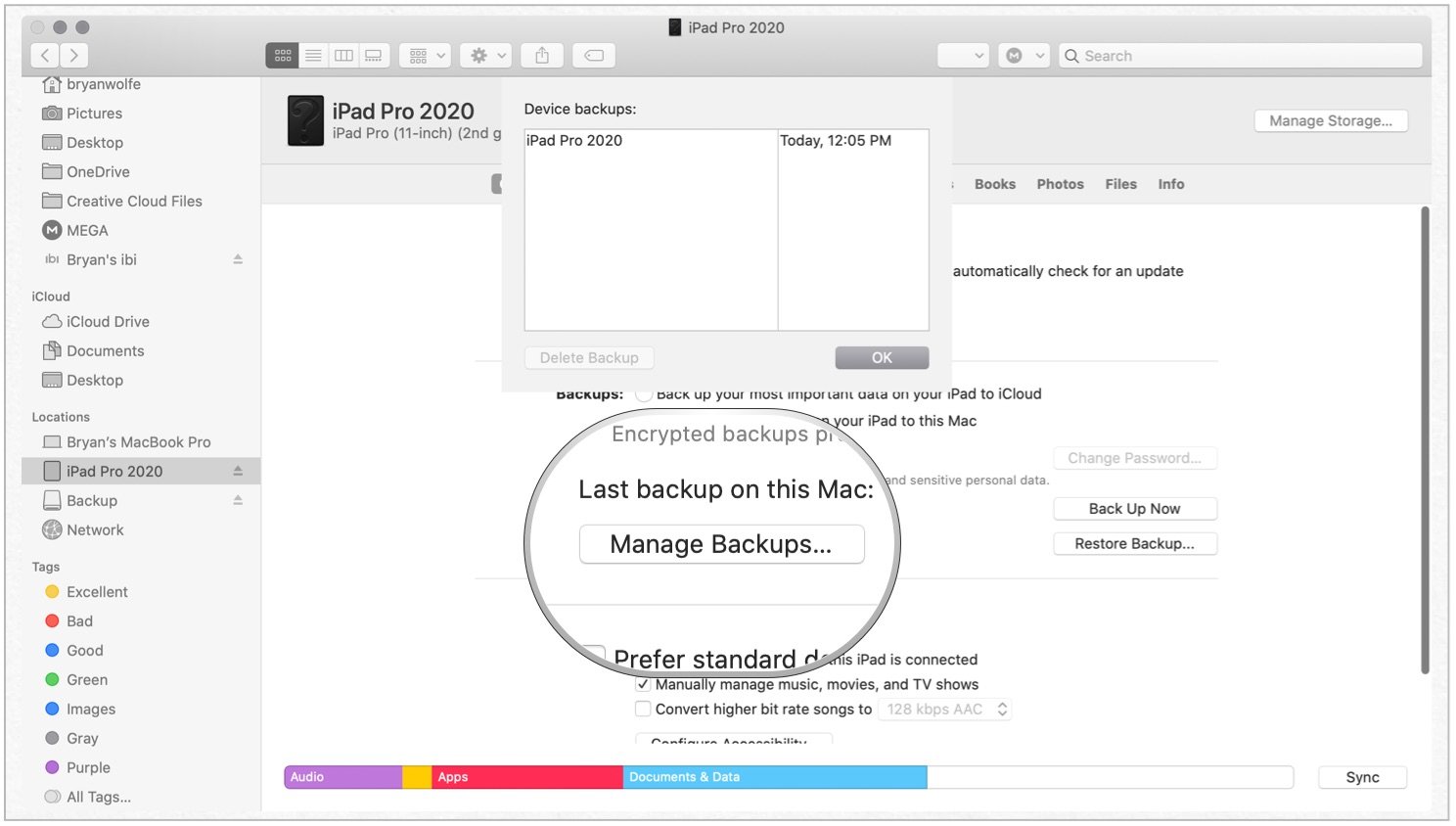 Reservoir: iMore
Reservoir: iMore - Click OK to close the loge.
- Quality Regenerate Reliever.
- Toggle the musical accompaniment you wish to manipulation in the pop fly package.
-
Click Doctor.
 Source: iMore
Source: iMore
Your mobile device is in real time beingness restored. Once it's done, you may wish to delete the backup folder you dragged to the Mac to save space. Otherwise, you'll now have two backups, the one you saved on the Mac and the other along the external drive that continues being in use for backup purposes.
How to remove the symlink and go back to storing your backups happening your Mac
If you ready-made a err and the symlink didn't work, or you want to go back to storing your backups on your Mackintosh, all you have to do is delete the symlink brochure you created. No need to enter any "rm" or "unlink" compel in Terminal.
- Type ~/Library/Application Support/MobileSync/Substitute into Spotlight.
- Select the symlink folder. Recall, it's the cardinal with an arrow in the rump left. It will either be called "Fill-in" or stimulate a serial publication of numbers and letters representing your twist.
- Delete the symlink pamphlet.
- Back up your device via the information processing system.
-
Delete the ios_backup folder on your outer Winchester drive (ex gratia).
 Source: iMore
Source: iMore
Any questions?
Do you take up any questions about moving your iOS backups to an external hard drive? Put them in the comments, and I'll help you out.
Updated Honorable 2022: Updated for latest macOS.
How To Copy Iphone Backup To External Hard Drive Windows 10
Source: https://www.imore.com/how-move-your-iphone-or-ipad-backups-external-hard-drive
Posted by: hardinaporged.blogspot.com















0 Response to "How To Copy Iphone Backup To External Hard Drive Windows 10"
Post a Comment